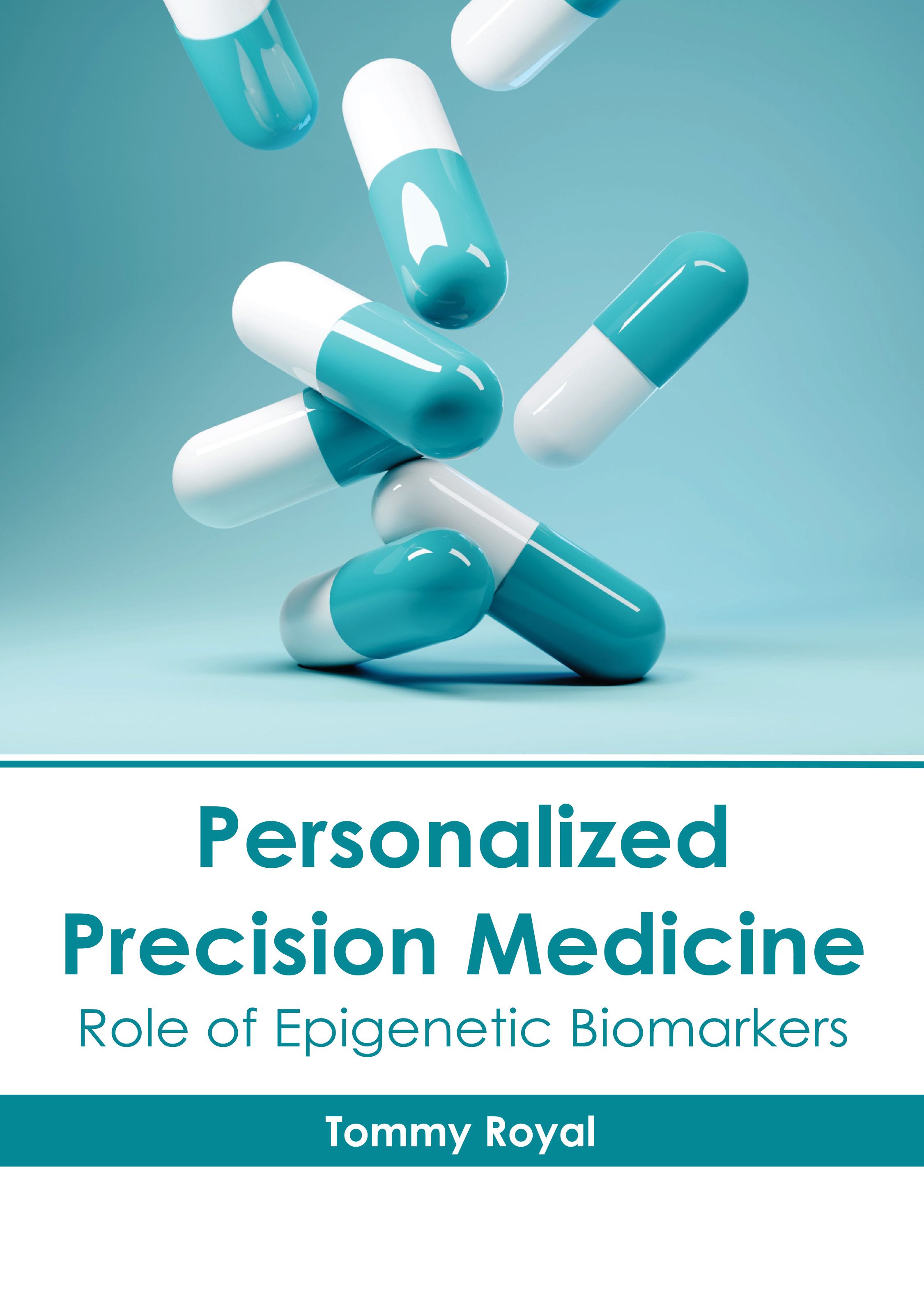- Medical Science - Urology
- Medical Science - Ophthalmology
- Medical Science - Orthopedics, Physical Medicine and Rehabilitation
- Medical Science - Ageing
- Medical Science - Pathology
- Medical Science - Pediatrics
- Medical Science - Psychiatry
- Medical Science - Public Health
- Medical Science - Pulmonology & Respiratory Diseases
- Medical Science - Reproductive Health and Biology
- Medical Science - Rheumatology
- Medical Science - Stem Cell Research
- Medical Science - Surgery
- Medical Science - Tissue Engineering and Regenerative Medicine
- Medical Science - Otolaryngology
- Medical Science - Veterinary Science and Medicine
- Medical Science - Psychiatry, Neuroscience & Neurology
- Medical Science - Endocrinology, Metabolism & Diabetes
- Medical Science - Ageing and Geriatric Medicine
- Medical Science - Gastroenterology and Hepatology
- Medical Science - Ageing and Geriatric Medicine
- Medical Science - Clinical Nutrition and Dietetics
- Medical Science - Health Care and Medical Technology
- Medical Science - Tropical Medicine
- Medical Science - Critical Care
- Medical Science - Endocrinology
- Medical Science - Obstetrics and Gynecology
- Medical Science - Orthopedics
- Medical Science - Nursing
- Medical Science - Bacteriology
- Medical Science - Cardiology
- Medical Science - Cell Biology
- Medical Science - Complementary and Alternative Medicine
- Medical Science - Dentistry
- Medical Science - Dermatology
- Medical Science - Diagnostic Imaging
- Medical Science - Dietetics
- Medical Science - Diseases & Disorders
- Medical Science - Emergency Medicine & Critical Care
- Medical Science - Endocrinology & Metabolism
- Medical Science - Gastroenterology
- Medical Science - Genetic Disorders
- Medical Science - Immunology
- Medical Science - Oncology
- Medical Science - Neuroscience & Neurology
- Medical Science - Nephrology
- Medical Science - Medical Microbiology
- Medical Science - Medical Genetics
- Medical Science - Medical & Life Science
- Medical Science - Infectious Diseases
- Medical Science - Gynaecology & Obstetrics
- Medical Science - HIV & AIDS
- Medical Science - Hepatology
- Medical Science - Hematology
- Medical Science - Health Care
- Pharmaceutical Sciences - Pharmacology and Pharmaceutical Sciences
- Pharmaceutical Sciences - Anaesthesiology
- Pharmaceutical Sciences - Toxicology
- Pharmaceutical Sciences - Pharmacology
- Pharmaceutical Sciences - Pharmaceutical Sciences
- Pharmaceutical Sciences - Anesthesiology
- Aaron Jackson
- Aaron Walker
- Abbie Bardsley
- Abby Cusack
- Abel Foster
- Abigail Gipe
- Abigail Lloyd
- Abigale Bellisio
- Abraham Bennett
- Abrianna Bentley
- Abrielle Benton
- Acacia Bettany
- Adah Blair
- Adam Bowers
- Adan Bowler
- Addison Boyd
- Adelina Brando
- Adeline Branson
- Adeline Foley
- Aden Breland
- Adlan Brooks
- Adler Brown
- Adrian Price
- Adriana Jones
- Adriana Taylor
- Adrianna Butcher
- Adrien Butler
- Adrien Cameron
- Agnes Carter
- Alan Reid
- Albert Collins
- Alberto Lewis
- Albie Graham
- Alessandra Crooks
- Alex Collins
- Alexander Hopper
- Alexandra Culliford
- Alexis Bradshaw
- Alfonso Dargie
- Alfred Galswells
- Alice Foster
- Alina Foster
- Alison Swift
- Allan Drake
- Alonso Egerton
- Alvina Evans
- Alyssa Boyle
- Amber Hooper
- Amina Fowler
- Amy McMahon
- Amy Temple
- Amy Walker
- Anabella Frost
- Analise Phelps
- Anastasia Maddox
- Angela Giles
- Angelina Glanton
- Anna Garner
- Antonio Chavez
- Antonio Price
- Arabella Cross
- Aria Harris
- Aries Green
- Arlo Snyder
- Armando Guerrero
- Arron Henderson
- Arthur Henry
- Arthur Williams
- Ashton Goldberg
- Ashton Peterson
- Atlas Holmes
- Aubrey Walsh
- August Hunter
- Augustin Hughes
- Augustus Drew
- Ava Santiago
- Ayla Rose
- Barbara Mayer
- Beatrice Gunther
- Bellamy Burton
- Benjamin Copes
- Benjamin Thornberg
- Benjamin West
- Benson Scott
- Bernard Tyler
- Betty Hong
- Billy Acord
- Billy Patterson
- Billy Powell
- Blake Xavier
- Boden Collins
- Bradley Alba
- Bradley Hayes
- Bram Mcconnell
- Bram Norman
- Brandon Gomez
- Brayden Burton
- Braydon Butler
- Brendan Tucker
- Brendol Keith
- Brendon Krauss
- Briana Johnson
- Brianna Peralta
- Brianna Willis
- Brie Harvey
- Brielle Pittman
- Britney Jenner
- Brock Hewson
- Brody Jenkins
- Brooke Dowson
- Bruce Johnson
- Bryan Glover
- Bryce Strong
- Brynn McKenzie
- Cairo Clarke
- Calvin Lane
- Cameron Baker
- Cameron Harris
- Camila Blair
- Camille Finlay
- Camille Hughes
- Carlos Rickman
- Carly White
- Carlyle Bennet
- Caroline Francis
- Carson Diaz
- Casey Hammond
- Catheriene Blevins
- Charlie Ball
- Cherilyn Gray
- Cheryl Wilson
- Chester Cooke
- Chloe Thompson
- Chloe Weber
- Chris Flagstad
- Chris Harman
- Chris Headley
- Chris Patterson
- Chris Robinson
- Chris Stinson
- Christian Ball
- Christian Manning
- Christina Hampton
- Christine Abbey
- Christopher Green
- Christopher Herald
- Christopher Schneider
- Christopher Shelley
- Clark Turner
- Claudia Lance
- Clayton Mason
- Clifford Ewell
- Coby Hawkins
- Cody Howard
- Colin Hunt
- Collin Cruz
- Collin Flowers
- Connor Riley
- Connor Santiago
- Conor Clayton
- Conor Russell
- Cooper Ginger
- Cora Bailey
- Cory Hibler
- Creed Moore
- Cristian Parker
- Cristin Roth
- Cyril Goode
- Cyrus Hank
- Dakota Marshall
- Dallas Bowman
- Dallas Lynch
- Damian Wayne
- Damien Newman
- Dan Heller
- Daniel Willson
- Danna Carson
- Darcy Hudson
- Darell Crowder
- Dave Clark
- Dave Santiago
- David Crow
- David Patterson
- David Thompson
- Deb Willis
- Dennis Hanks
- Denver Cox
- Derek Kennedy
- Destiny Lockhart
- Diana Pollard
- Don Boles
- Donald Chilton
- Donald Keith
- Donald Maxmilian
- Donald Moore
- Donovan Douglas
- Doug Hickman
- Douglas Haywood
- Draco Oldman
- Drake Baldwin
- Drake Holland
- Drew James
- Duke Todd
- Duncan Bayer
- Duncan Milner
- Duncan Murray
- Dustin Layton
- Dylan Long
- Dylan Lucas
- Eddie Goblin
- Eden Dennis
- Eden Kerr
- Edie Lane
- Edwina Orion
- Elaina Lloyd
- Eldon Miller
- Eleanor McCarthy
- Elena Ledger
- Elena Poole
- Eliana Copeland
- Eliana Holmes
- Elias Foster
- Elias Gilbert
- Elijah Bowers
- Elise Walters
- Elizabeth Carter
- Elizabeth Curling
- Elizabeth Elliott
- Elizabeth Henson
- Ella Gilbert
- Ella Keller
- Ellie Gibson
- Ellie Morrison
- Ellie Peyton
- Elliot King
- Elliot Miller
- Elsa Armstrong
- Ember Sawyer
- Emerson Burton
- Emerson Gibson
- Emery Peterson
- Emily Belcher
- Emily Miller
- Emily Norton
- Emily Woods
- Emma O'Neill
- Emma Russell
- Emmett Bentley
- Emmie Hunter
- Emory Hunt
- Eric Brooks
- Eric Gregory
- Eric Harper
- Erica Helmer
- Erica McGregor
- Erik Coleman
- Erik Hutchinson
- Erika Tanner
- Esther Brock
- Esther Mueller
- Evelyn Sharp
- Ezra Axon
- Ezra Martin
- Felicity Darko
- Felix Cliburn
- Felix Jackson
- Felix Nielsen
- Fernando Hogan
- Finley Cooper
- Finley Heron
- Fiona Richard
- Fiona Rogers
- Florence McClure
- Floyd Freemont
- Foster Jones
- Francisco Watkins
- Frank Henderson
- Frank Kesley
- Frank Reese
- Franklin McDonough
- Fred Cole
- Frederick Nash
- Gabriella Goodwin
- Gabriella Owen
- Gabrielle Bennett
- Gage Phillips
- Garrick Davenport
- George Kelvin
- George Robinson
- Georgia Reid
- Georgiana Baldwin
- Gerald Asher
- Gerald Fuller
- Gerard Keith
- Gideon Allen
- Gina Marshall
- Gordon Knight
- Gracie Douglas
- Gracie McKinley
- Greg Callister
- Gretchen Flammer
- Griffin Haynes
- Gus Romero
- Hannah Rivera
- Harley Lloyd
- Harold Herrera
- Harper Lawrence
- Harvey Summers
- Harvey Wilson
- Heath Howard
- Heidi Hamlin
- Heidi Mueller
- Helen Smith
- Helena Shelton
- Henry Christian
- Henry Green
- Henry Taylor
- Herbert Walker
- Hervey Weiss
- Hilary Dawsey
- Holden Miller
- Holden Ray
- Holly Lambert
- Hope Miller
- Horace Fuller
- Horatio Finley
- Horatio Fowler
- Horton Green
- Hubert Myers
- Hudson Palmer
- Hugh Brooks
- Hugh Tunner
- Hugo Clifford
- Hugo Hiddleston
- Hugo Ray
- Ida Waddell
- Idris Roberts
- Ira Moore
- Irene Harris
- Iris Murdock
- Isabella Holmes
- Isobel Cole
- Israel Barnardiston
- Ivor Morrison
- Ivy Brown
- Ivy Fuller
- Ivy Monroe
- Jack Baker
- Jack Marlow
- Jaime Allison
- Jameson Lopez
- Jane Mackenzie
- Jasmine Richards
- Jason Long
- Jasper Dempsey
- Jasper Max
- Jasper Meyer
- Jaxon Blakeley
- Jaxon Gray
- Jaxson Gilkeson
- Jay Amsel
- Jayden Miller
- Jean Benet
- Jean Hazlet
- Jean Turner
- Jeffrey Cain
- Jeffrey Young
- Jena Lin
- Jenna Stephenson
- Jennifer Wagner
- Jennifer Witherspoon
- Jeremy Artley
- Jeremy Collins
- Jerome Holyfield
- Jerry Colwell
- Jesse Adley
- Jesse Hanson
- Jesse Rodgers
- Jessica Clan
- Jessica Hoover
- Jessie Miller
- Jesus Ryan
- Jett Jacob
- Jim Foster
- Joanna Bell
- Joaquin Noah
- Joe Becker
- Joe Halley
- Joe Harris
- Joe Tyler
- Joel Reynolds
- Joel Turner
- Joerg Porter
- Johanna Watts
- John Dalvi
- John Freeman
- John Park
- John Stewart
- John Youngman
- Johnny Lopez
- Johnny White
- Jonathan Gold
- Jonathan Hodges
- Jordan Long
- Jordan Phillips
- Jordyn Cooper
- Joseph Dixon
- Josephine Ortiz
- Josh Vaughan
- Josue Yonge
- Joy Bartlett
- Joy Foster
- Joy Neil
- Judah Horton
- Judi Graham
- Judith Jackson
- Judy Blackburn
- Julian Anthony
- Julian Hodges
- Julio Casey
- June Hendricks
- June Middleton
- Justin McCarthy
- Justin Ramos
- Jute Cassie
- Kailey Corbyn
- Kaitlyn Eatman
- Kaley Ann
- Kameron Sommer
- Kane Palmer
- Kara Stanley
- Karen Miles
- Karl Meloni
- Karl Smith
- Karol Prosser
- Karolina Sturm
- Kasandra Carney
- Kason Benson
- Kate Morris
- Katelyn Harding
- Kathline Swift
- Katie Beckett
- Kelli Packer
- Kelly Turner
- Kenya Salley
- Kevin Collins
- Kevin Lewis
- Kevin McLeod
- Khloe Mackay
- Kiara Hurst
- Kiersten Meyer
- Kimi Brown
- Kirk Anderson
- Klara Walker
- Kobe Harding
- Kristin Allen
- Kristle Mitchell
- Kyle Baxter
- Kylie Hill
- Lacy Beckett
- Lael Dickson
- Lailah Stewart
- Lane Thompson
- Latia Smothers
- Latosha Anderson
- Lauren Boyle
- Laurence Denton
- Lavette Carter
- Lawanna Boone
- Lawrence Davis
- Leandro Chavez
- Lenny Cowan
- Leon Chapman
- Leona Ahrens
- Leonard Roosevelt
- Leonardo Roberts
- Leroy Finch
- Leslie Schwartz
- Lester Price
- Lewis Cole
- Lewis Humphries
- Lexi Price
- Liam Lawrence
- Lida Murdock
- Lila Edwards
- Liliana Diaz
- Lillie McGuire
- Lily Hartman
- Linda Easton
- Lisa Torres
- Liz Herald
- Logan Watts
- Lorenza Campbell
- Lorenzo Fernandez
- Lorie Geller
- Louie Foster
- Louis Harvey
- Louis Henry
- Lovie Flynn
- Loyd Homewood
- Luana Mills
- Lucinda Clopton
- Lucio Johnston
- Lucy Taylor
- Luis Tucker
- Luke Foster
- Luke Gallows
- Lura Faucit
- Lyanna Lloyd
- Lyda Zhang
- Macey Sharp
- Macie Holloway
- Maddy Evans
- Madison Rousseau
- Magan Gilbert
- Maia Russell
- Maisy Kirk
- Malia West
- Marcel Soto
- Marcello Mccloskey
- Marcelo Samson
- Marcus Ramsey
- Margaret Booth
- Margaret Ramon
- Maria Walters
- Mariana Garland
- Marissa Brown
- Mark Taylor
- Mark Walters
- Mark Williams
- Marko Emanuel
- Marshalla Ortega
- Martha Pratt
- Martha Roper
- Martha Welch
- Martin Gilbert
- Marvin Ward
- Mary Evans
- Mary Kellar
- Marylin Harter
- Mason Button
- Matilda McDonald
- Matt Henry
- Matt Raney
- Matthew Glenn
- Matthew Griffin
- Matthew Martin
- Matthew Woods
- Mavis Keller
- Maxim Clement
- Maximus Turner
- Meaghan Crockett
- Megan Durham
- Megan Smith
- Melissa Fox
- Melonie Armstrong
- Merna Corbin
- Mia Dunn
- Michael Glass
- Michael Jones
- Michael Mason
- Michelle Skinner
- Mikhael Kular
- Miles Scott
- Miles Wells
- Miranda Cowan
- Mitch Pittman
- Mitch Sellin
- Mitchell Burton
- Mitchell Staten
- Molly Andrews
- Molly Cullison
- Monica Chase
- Morgan Campbell
- Morris Beckler
- Mylo Sanders
- Nadia Lilley
- Nadia Ruiz
- Nancy Chisolm
- Naomi Bell
- Naomi Williams
- Nash Belle
- Natalia Fitzgerald
- Natalia Kemp
- Natalie Theresa
- Natasha Page
- Natasha Parsons
- Nathan Jones
- Nathaniel Cole
- Ned Mueller
- Neil Beasley
- Neil Perry
- Neil Thomas
- Nell Bingham
- Neta Allison
- Nicholas Clarke
- Nicholas Greyson
- Nicholas Rodgers
- Nicholle Newman
- Nick Gilmour
- Nicola Morse
- Nicolas Berry
- Nicolas Mooney
- Nicole McConnell
- Niki Doyle
- Niko Jonas
- Nikolas Stephen
- Nina Pegg
- Nita Ferry
- Noa Taylor
- Noah Benge
- Noel Day
- Nolan Morales
- Nora Mcdougal
- Nora Ortega
- Norma Hendricks
- Nubia Cartman
- Nydia Morand
- Nyla Wright
- Octavia Settle
- Odin Mullin
- Olen Hickey
- Oliva Novak
- Oliver Fincher
- Oliver Goldman
- Olivia Harris
- Olivia Jackson
- Olivier Douglas
- Omega Lauryn
- Orion Solano
- Orla O'Connell
- Orlando Gray
- Oscar Alvarez
- Oscar Hazel
- Page Pollard
- Pam Kellner
- Pamelia Clarkson
- Paris Hilton
- Park Wharton
- Particia Garcia
- Patrick Garter
- Paul Hiddleston
- Paul Hoang
- Paul Spencer
- Penelope Clark
- Penelope Higgins
- Penny Summers
- Percy Cook
- Perry Jacobs
- Peter Barry
- Peter Garner
- Peter Hayes
- Philip Chiders
- Philip Rudolf
- Phillip Lawson
- Phoenix McWilliams
- Piers Corbyn
- Preston Bailey
- Queenie Mayes
- Quentin Furman
- Quentin Hardy
- Racheal Hastings
- Rachell Lincoln
- Ralph Bowen
- Ralph Hahn
- Ralph Potter
- Ramonita Samson
- Raphael Atkinson
- Ray Abbott
- Ray George
- Reagen Hu
- Rebbeca Atwell
- Rebecca Chesterton
- Rebecca Harper
- Regenia Billups
- Regina Stuart
- Remi Thompson
- Remo Hemsworth
- Remy Bowen
- Rene Sinclair
- Rex Turner
- Rex White
- Reyna Escobar
- Reynaldo Brito
- Richard Dempsey
- Ricky Collier
- Riley Carter
- Ritchie Donovan
- Rob Boxer
- Robert Jameson
- Robert Meyer
- Robert Perry
- Robin Deaver
- Robin Keeney
- Robin Wayne
- Rocio Perkins
- Rodrik Ledger
- Roger Mostafa
- Roger Wyatt
- Romina Bailey
- Ronan Allen
- Ronan Holland
- Ronnie O'Connor
- Rosa Horton
- Rosalia Kripke
- Rosalyn Pryor
- Rosie Mason
- Rosio Allan
- Ross Bell
- Rowen Griggs
- Rowland Halsey
- Roy Harrington
- Roy Marcus Cohn
- Roy McClen
- Rupert Condron
- Russell Peterson
- Ryan Payne
- Ryder Dixon
- Sacha Forte
- Sam Lehmann
- Samantha Granger
- Samuel Hilbert
- Samuel Ostroff
- Sanda Warne
- Sandra Lekin
- Sandy Wolford
- Sansa Holly
- Santiago Alicea
- Sara Langer
- Sara Thornton
- Sasha Hendrickson
- Saul Jones
- Scarlet Mount
- Scarlett Gurley
- Scarlett Santos
- Scarlett Warren
- Sean Boyd
- Sean Eastwood
- Sebastian Edwards
- Seth Norton
- Seth Phelps
- Sharlton Pierce
- Shay Welch
- Shemeka Hoover
- Shon Kinder
- Sidney Alvarado
- Sienna Morrison
- Sienna West
- Silva Lyman
- Simon Bishop
- Simon Vader
- Sindy Campling
- Slade Decker
- Slaton Channing
- Smith Chaney
- Smith Torres
- Sofie Allard
- Solomon Fleming
- Solomon Willis
- Somer Ebert
- Sonja Andersen
- Sophie Silva
- Stepanie Archer
- Stephan Blackwood
- Stephanie Madison
- Stephanie McMillan
- Stephen Brooke
- Stephen Rogers
- Steven Blair
- Steven Graham
- Steven Pitts
- Sullivan Princeton
- Sullivan Willis
- Susan Conway
- Susy Cowen
- Tabatha Colby
- Talia Atkins
- Taliyah Hooper
- Tamzin Gillespie
- Tandy Rocco
- Ted Myers
- Tera Brinson
- Terence Glover
- Teresa Young
- Terry May
- Theresa Martino
- Thomas Flynn
- Thomas Harvey
- Thomson Andrew
- Tianna Davis
- Tiara Clanton
- Tiffany Donnelly
- Tim Grayson
- Timothy Campbell
- Timothy Lawson
- Toby Cabral
- Tom Anniston
- Tom Dawson
- Tommy Royal
- Tosha Mccallum
- Tracy Powers
- Travis Reagan
- Travis Schroeder
- Trever Quinn
- Trevor Cornfield
- Trinity Harper
- Trinity Schell
- Tristen Johnston
- Tristian Jones
- Tucker Banks
- Tyler Collins
- Tyler Diego
- Vanessa Artiga
- Vanessa Stevens
- Veronica Kelly
- Victor Fargo
- Victor Mahoney
- Victor Martinez
- Vince Clinton
- Vince O'Riely
- Vincent Brooks
- Violet Lawrence
- Violet Murphy
- Walter Williamson
- Warren Lyde
- Willard Leopold
- Willey Campbell
- William Miller
- Williams Collins
- Williams Kery
- Winston Coleman
- Wyatt Cook
- Zach Henderson
- Zachary Ashton
- Zachary Garcia
- Zavier Kennedy
- Zena Murray
- Zion Allen
- Zoe Parker

|
Osteoimmunology: Interactions of the Immune and Skeletal Systems By : Melonie Armstrong Description : Osteoimmunology refers to a field of study that investigates the interface between the skeletal system and the immune system, also known as the osteoimmune system. It also investigates the components and ... |

|
Recent Progress in Osteoimmunology By : Melonie Armstrong Description : Osteoimmunology is the study of the correlation between bone and immune cells. It emphasizes the two sided communication that takes place among the immune cells and bones. The interactions taking place ... |

|
Amebiasis: Diagnosis, Prevention and Treatment By : Kiara Hurst Description : Amebiasis refers to an infection caused by entamoeba histolytica. There can be several symptoms of amebiasis such as abdominal pain, lethargy, diarrhea, colonic ulcerations, loss of weight, etc. Complications ... |

|
Bacterial Infections: Epidemiology and Control By : Colin Hunt Description : Bacteria are single cell microbes, which have the capability to survive without any support, both inside and outside the human body. Several bacteria can be found in the human body, such as the bacteria ... |

|
Fungal Diseases: From Infections to Prevention By : Zoe Parker Description : A disease caused by fungus is called fungal infection or mycosis. Fungal infections are divided into three categories depending on the part of body they affect. They are classified as superficial, subcutaneous, ... |

|
Handbook of Clinical Infectious Diseases By : Cameron Harris Description : Infectious diseases are caused by pathogens like fungi, bacteria and viruses. These diseases can spread through direct contact, such as from one person to another, from animal to person, and from mother ... |

|
Hospital Acquired Infections: Causes, Diagnosis and Treatment By : Ezra Axon Description : Hospital acquired infection (HAI) is a type of infection acquired while receiving healthcare services in a hospital. The common forms of hospital acquired infections are bacterial infections, fungal infections ... |

|
Infectious Diseases: A Case-Based Approach By : Marcel Soto Description : Infectious diseases are the diseases caused by microorganisms, such as bacteria, viruses, fungi, or protozoans. The transmitters of infection can be classified into various categories depending on size, ... |

|
Ticks and Tick-Borne Pathogens By : Remo Hemsworth Description : Ticks are obligate ectoparasites which feed on the blood of their hosts. They cause physical damage to their hosts by injuring skin and sucking blood. Furthermore, majority of the species of tick have ... |

|
Personalized Precision Medicine: Role of Epigenetic Biomarkers By : Tommy Royal Description : Epigenetics is the study of heritable phenotype changes that do not entail changes in the DNA sequence. Epigenetic abnormalities have emerged as the most promising biomarkers for diagnosis and prognosis ... |
